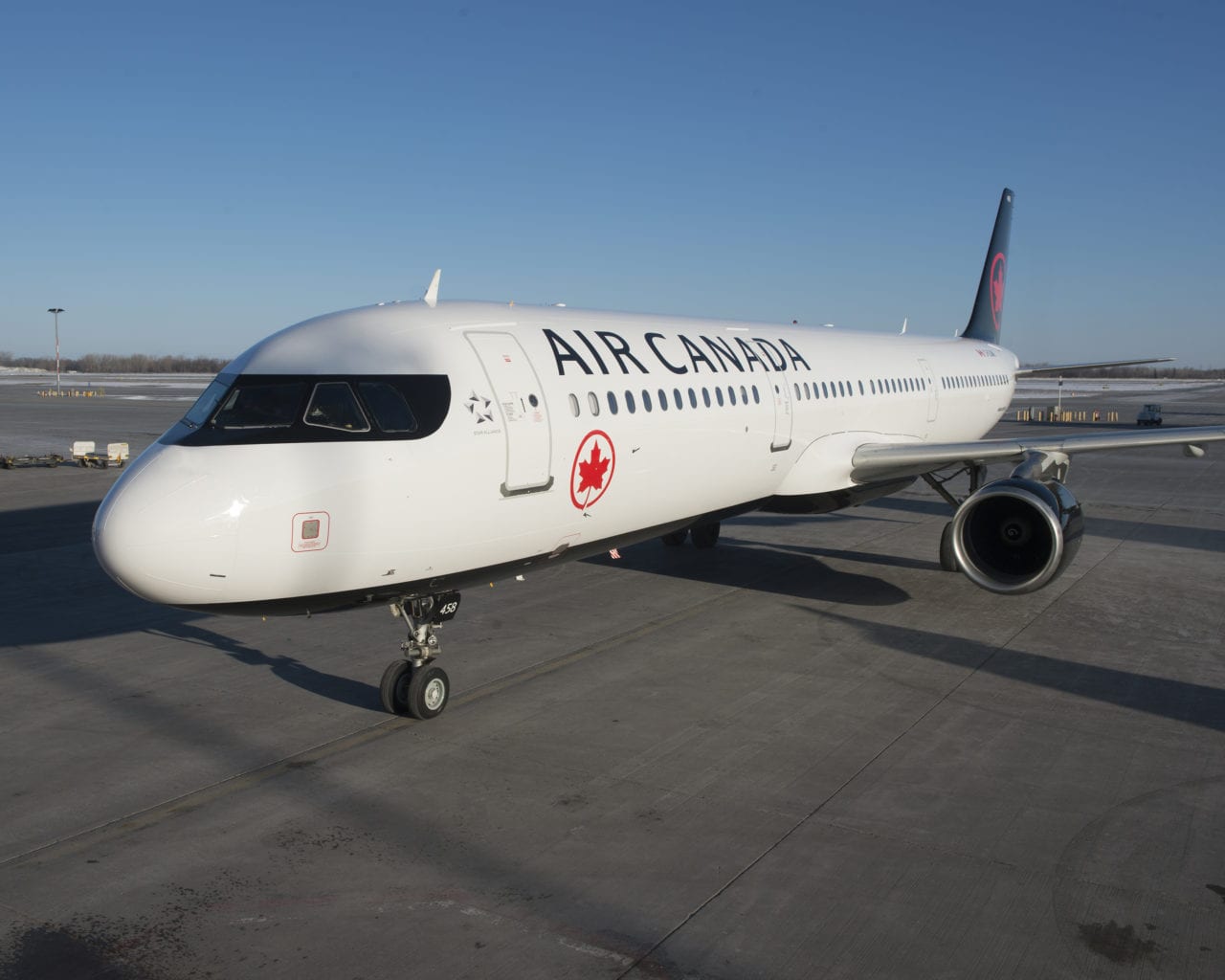
An Air Canada Airbus A321. Photo, courtesy of Air Canada.
On July 7, 2017, an Airbus A320-211 operated by Air Canada came within 60 feet of crashing into an Airbus A340 on a taxiway at San Fransisco International Airport (SFO). In its incident report for the near-miss, the National Transportation Safety Board (NTSB) last month recommended a number of changes to the FAA and Transport Canada to prevent a repeat of what NTSB Vice Chairman Bruce Landsberg called nearly the “worst aviation accident in history.”
The investigation found that the pilots of flight AC759 were approaching two parallel runways at SFO, 28L and 28R, and lined up with the incorrect one, not realizing it was closed and already occupied by four aircraft. While a notice of runway 28L’s closure was provided, the NTSB concluded that it did not convey the message effectively.
Investigators determined that the crew was sufficiently qualified, but that the first officer and captain did not respectively follow procedure by respectively tuning and checking the instrument landing system frequency for visual approach. This occurred because that was the only flight management system (FMS) bridge visual approach in the carrier’s A320 navigation database for which manual adjustment is required — making it an unusual procedure for the crew — and the instruction to do so was not posted conspicuously.
Having failed to realize that the aircraft was aligned with the incorrect runway, the A320 descended to 100 feet AGL when it passed over the first plane on 28L. It continued to descend, coming closer to a collision with one of the four planes below. The crew of AC759 later indicated that they did not know they had flown over other aircraft.
Upon reaching 60 feet AGL and passing over the second aircraft on the taxiway, the Airbus A340, AC759 began to climb again as it initiated a go-around maneuver to re-approach and land on the correct runway. It was already climbing by the time the controller gave the order to engage in a go-around. Only one controller was on duty for the midnight shift instead of the normal two, but the investigation found it unlikely that workload contributed to the situation.
“The overflying crew may have been in a poor position to fully understand their proximity to disaster because of their perspective, looking down at night, and their workload, as they executed functions necessary to landing,” NTSB member Earl Weener said in the incident report.
Further contributing to the situation, the captain and first officer had been awake for over 19 and 12 hours respectively, which is not allowed under U.S. regulations but is situationally by Canadian rule.
The cockpit voice recorder (CVR) was not immediately pulled from the plane. By the time that it was, the recording from the flight in question was overwritten, according to Air Canada, so the investigation had to occur without its assistance.
None of the 5 crew or 135 passengers on board were injured, but given how close the flight came to an incident and the magnitude of the potential crash, an investigation was called in an attempt to prevent a future repeat.
The NTSB made the following recommendations to the FAA in its report:
- Establish a requirement for a system that alerts pilots landing at airports if they are not lined up with runways.
- Work with avionics manufacturers to develop technology to ensure that pilots are lined up with the correct runway, then establish that as a requirement as well.
- Modify airport surface detection equipment at airports to detect incoming landings and alert air traffic controllers to potential collisions.
- Work with Part 121 carriers to assess all visual approaches at airports and judge FMS autotune capability to determine which require unusual manual inputs. For those that do, either develop necessary autotune capabilities or ensure that the manual entry frequencies are well-noted for pilots on approach charts.
- Investigate how to make closed runways more obvious to pilots, especially at night.
Additionally, it recommended that Transport Canada change its regulations to address potential fatigue for reserve pilots called in to fly, particularly in the evenings.
The NTSB called for pilots of all-sized aircraft to be limited the same way, and said in a statement that its “findings on fatigue underscore the many years of urgent calls by Canada’s pilots for flight crew fatigue rules that are supported by science.”
Notably, the suggestion to perform a review of airport surface detection equipment with the aim of adding the capability to alert controllers of potential collisions is one NTSB previously suggested to FAA in 2011. At the time, the FAA determined that attempting to determine aircraft position was too difficult to do in an accurate and timely manner, and the potential benefits were outweighed by the performance degradation.
The NTSB is renewing its call on the back of technological advancements made since the previous recommendation. The FAA has already begun looking into the matter for some airports.
NTSB’s report also notes that the agency is considering a recommendation to extend the amount of recording saved on CVRs to 25 hours, to help ensure that relevant recordings are available for investigations. It admitted that some pilots had objections based on privacy concerns, but called them a lower priority that safety.
“Workplace right-to-privacy has been extensively litigated but in safety-critical positions, it must take a backseat to human life,” the NTSB said in the incident report. “Most importantly, the data gathered routinely before an accident, will be invaluable in preventing the next tragedy.”
The FAA and Transport Canada have not yet responded to the recommendations made by the NTSB.